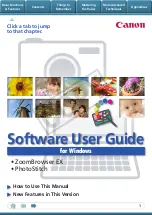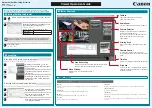
next to
Enable XML Formatting
and/or
Enable HTML Formatting
. To toggle
Tag Layout
and/or
Con-
tent Wrap
on or off for either file type, check or uncheck those items. For example, if you want both Tag
Layout and Content Wrap enabled for XML files, but you only want Content Wrap enabled for HTML files,
place a check next to
Enable XML Formatting
and its submenu items
Tag Layout
and
Content Wrap
,
then place a check next to
Enable HTML Formatting
and its submenu item
Content Wrap
.
The
xml_formatting_toggle
and
html_formatting_toggle
commands can also be used to toggle all re-
spective formatting features on/off. For use in macros, two more commands are available:
xml_formatting
and
html_formatting
. When you use any of these commands, the command line
prompts for yes (Y) or no (N). When these commands are used to enable/disable XML/HTML Formatting,
both Tag Layout and Content Wrap are enabled/disabled for both XML and HTML files on a global basis.
Enabling/Disabling for the Current Document
Current document options are available so that you can turn off aspects of global formatting for just the
current document. For example, if you have both aspects of HTML formatting enabled globally, but you
need to edit an old HTML file and do not want automatic tag layout to occur, you can disable HTML Tag
Layout for that specific file. The current document settings are remembered each time you open that file.
To change XML or HTML formatting for just the current document, click
Format
→
XML/HTML Format-
ting
→
Current Document Options
, or use the
xml_html_document_options
command. The Current
Document Options dialog is displayed.
Figure 7.31. Current Document Options Dialog
Select the
Formatting scheme
that you want applied, then check or uncheck the
Auto formatting op-
tions
that you want enabled or disabled. Click
Configure Schemes
if you want to modify or create a new
scheme to apply to the current document.
Global formatting must be enabled for the current file type in order for these options to be available. For
example, see the two screen shots shown previously. The menu screen shot shows that global HTML
formatting is enabled for Content Wrap only. This means that tag content for every HTML file that you cre-
Enabling/Disabling XML/HTML
Formatting
280
Summary of Contents for Corev3.3 for Eclipse
Page 1: ...Think Slick Corev3 3 for Eclipse...
Page 2: ......
Page 3: ...SlickEdit Core v3 3 for Eclipse...
Page 5: ......
Page 6: ......
Page 14: ...xii...
Page 20: ...xviii...
Page 22: ...xx...
Page 23: ...Chapter 1 Introduction 1...
Page 41: ...Chapter 3 User Interface 19...
Page 61: ...Chapter 4 User Preferences 39...
Page 80: ...BODY BODY HTML HTMLEOF Restoring Settings on Startup 58...
Page 82: ...60...
Page 83: ...Chapter 5 Context Tagging 61...
Page 97: ...Chapter 6 Editing Features 75...
Page 124: ...Code Templates 102...
Page 238: ...Figure 6 49 Test Parsing Configuration Example 1 C Refactoring 216...
Page 241: ...Figure 6 51 Test Parsing Configuration Example 3 Reviewing Refactoring Changes 219...
Page 250: ...228...
Page 251: ...Chapter 7 Language Specific Editing 229...
Page 328: ...306...
Page 329: ...Chapter 8 Tools and Utilities 307...
Page 350: ...328...
Page 351: ...Chapter 9 Macros and Macro Programming 329...
Page 360: ...338...
Page 361: ...Chapter 10 SlickEdit Core Dialogs 339...
Page 375: ...Find and Replace View 353...
Page 491: ...Chapter 11 Appendix 469...
Page 567: ......
Page 568: ......
















































